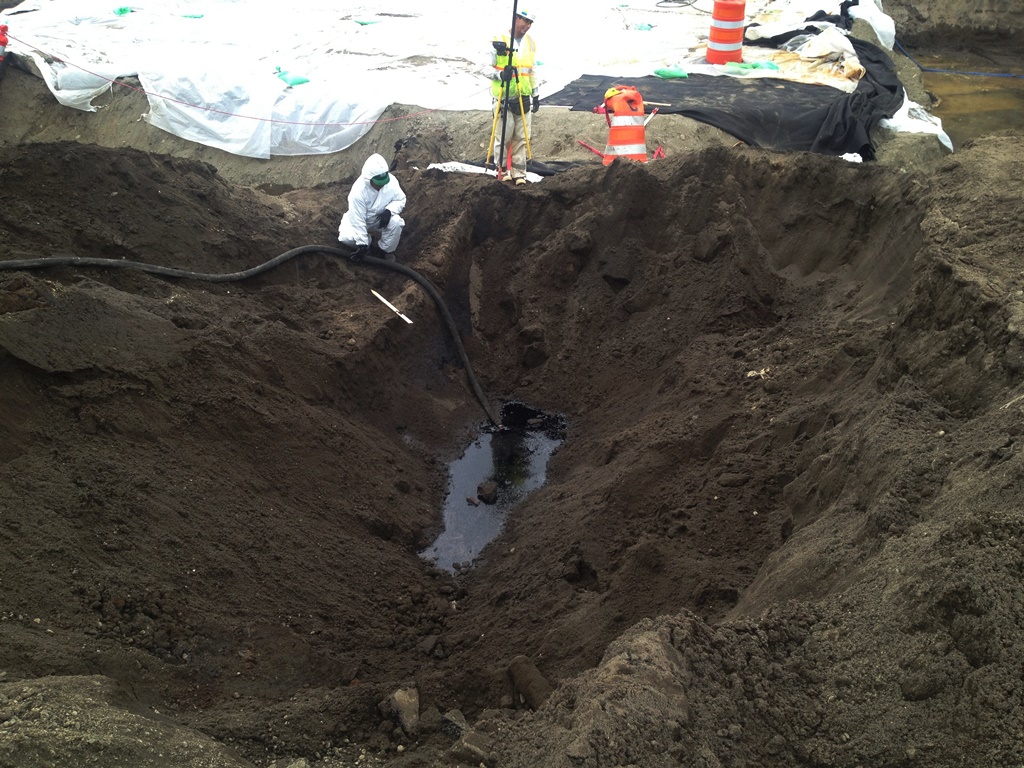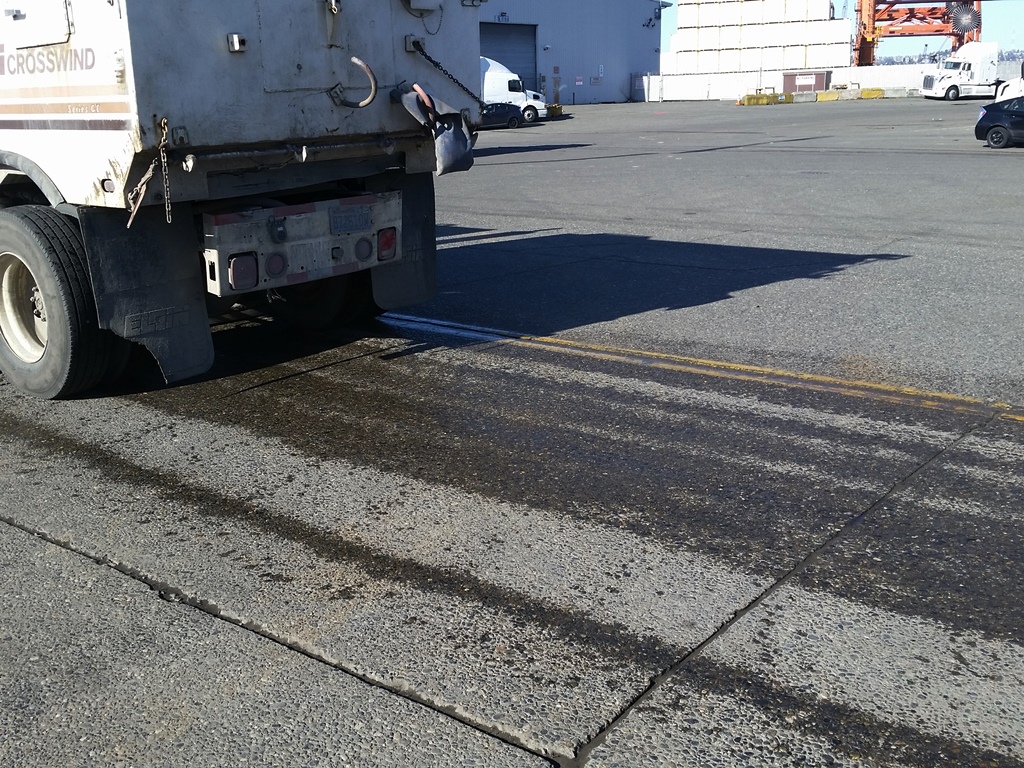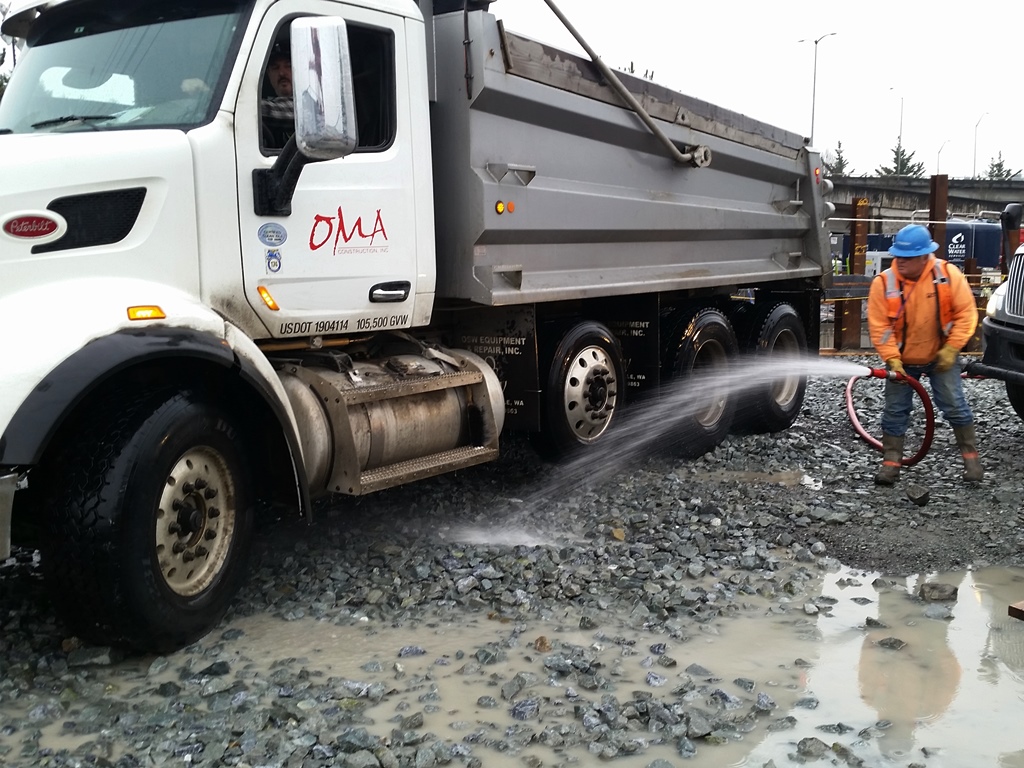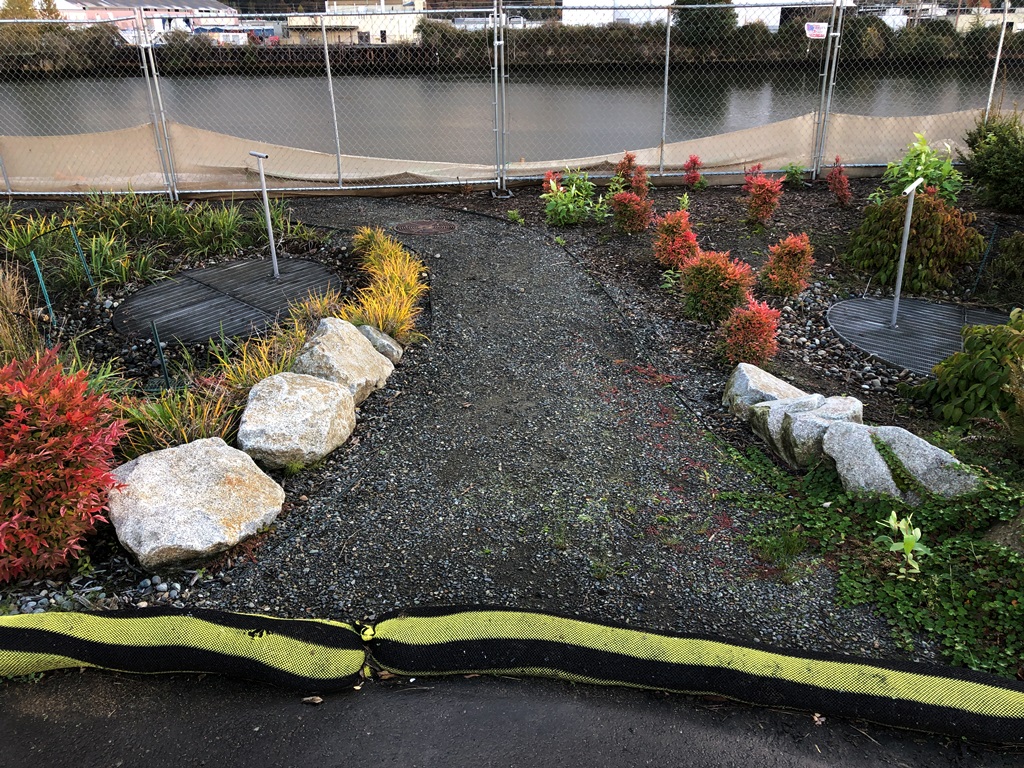I call these infiltration berms. They aren’t berms like the others in this presentation but they function the same way-they contain water, divert water, or both.
The first two photos show created berms and the last is a utility trench that has not been paved yet. The first two were installed to contain the dirty runoff from muddy shoreline rip rap that we had to remove to install piling.
The berm surrounds about two acres of paved surface. The asphalt was removed to expose the subgrade to allow runoff to infiltrate. These can be designed but we didn’t have time.
To do this correctly, you should figure out how much runoff you will have, how much storage volume to create (this determines how long and how wide the trench is) and the actual infiltration rate of the subgrade.
The last photo shows how you can use your site to your advantage.












